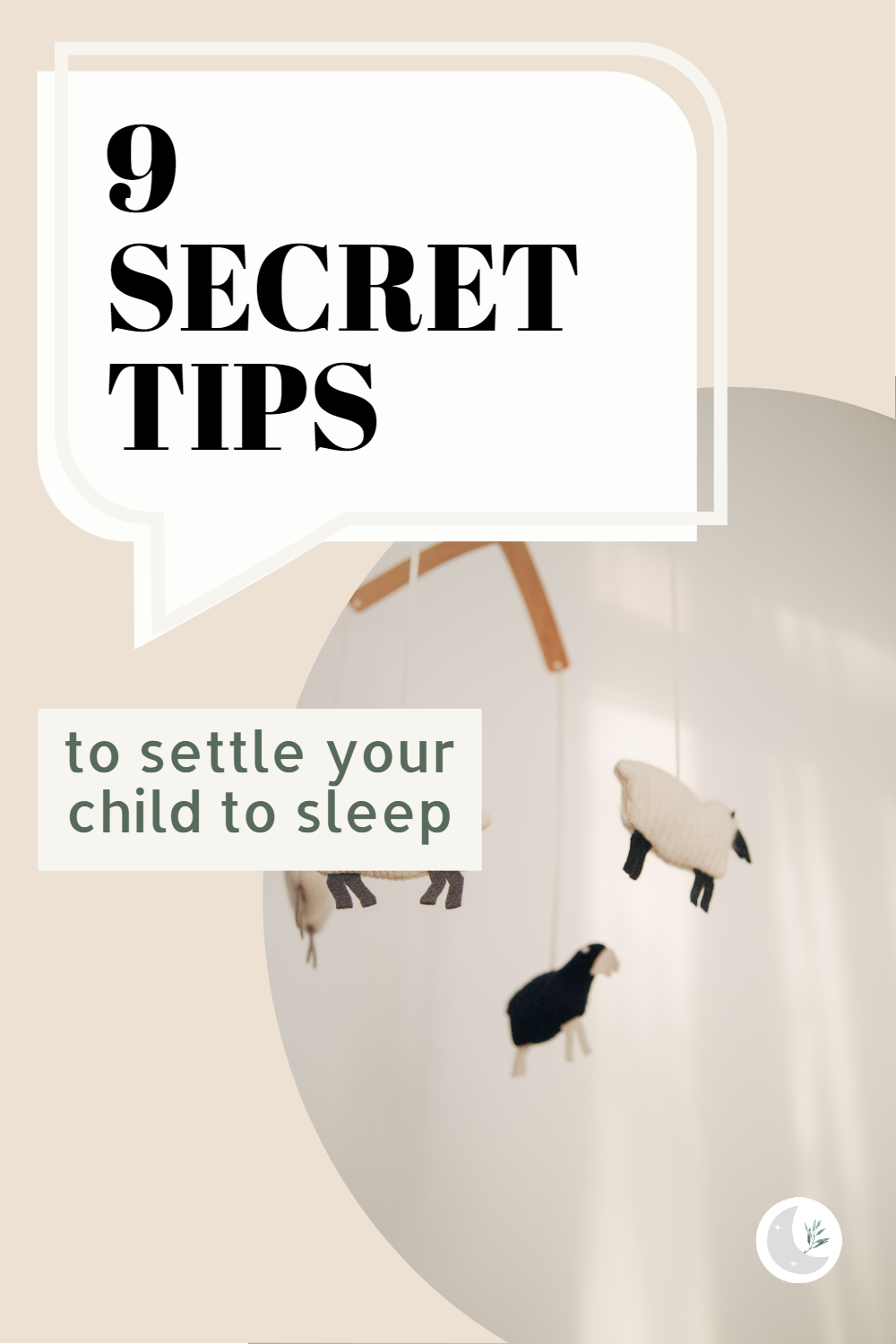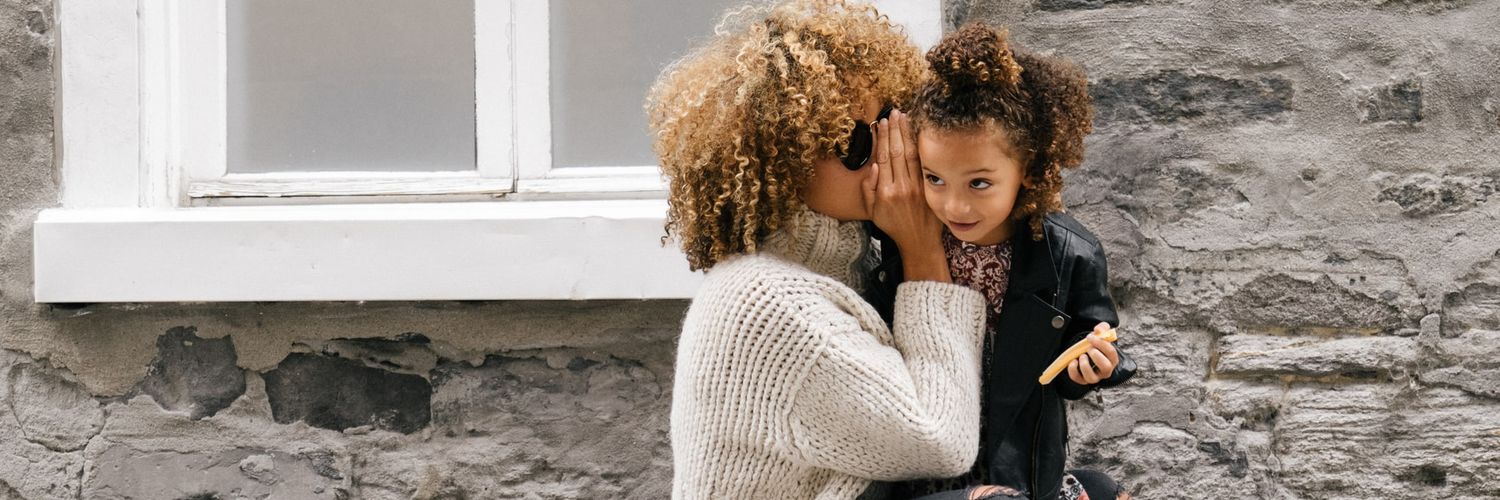Here are 9 must-try tips to settle your baby or toddler
We probably all know the basics of healthy baby sleep hygiene: Age-appropriate wake windows, a consistent nap, and sleep routine, and a bedtime ritual. We do all this to improve our little one's nighttime sleep. But falling asleep and staying asleep is sometimes not that easy. Even if you try to implement all the good sleep habits in the world. It often depends on baby's age, their preferences, and temperaments how easily they doze off.
And sometimes babies, even good sleepers, take a lot of time to fall asleep, which again can be frustrating for parents. So I don't want to promote the apparently holy skill of self-settling because it is not the answer to every sleep problem. Instead, I want to share some useful tricks to help your baby fall asleep easier and faster regardless of how they are falling asleep.
1. Let Dad Settle a Breastfed Baby
Sometimes breastfeeding mothers have more trouble settling a baby to sleep than the non-breastfeeding partner. Mom and the smell of the breastmilk are too tempting to fall asleep. With my second born, I had that trouble until I completely weaned him from the breast (and that was until 19 months). Even as a newborn baby, he would endlessly suck without really falling asleep. When he got older, he would grab my shirt, and once he started talking, he named my breast and would often call it out. But my husband never experienced this trouble. He would put him to sleep within 15 minutes.
I know that in many families, it manifests that the mom takes over the job of getting the baby to bed. But it makes a lot of sense to take turns, and this is such a case. If your little one has trouble falling asleep with mom, then consider dad taking over. Out of sight, out of mind!
Also, trust your partner that he can do it and reassure him that he can do it. They might be hesitant as well because the baby is used to being put to sleep by mom. But babies adjust very fast, so give both a chance.
2. Try Patience Stretching During The Day
This method usually works very well when you want to reduce parental presence during bedtime. We personally always wanted to stay with our children until they fell asleep. We genuinely enjoy it. But we had a little break doing so when my girl was about to get 2 years old. She would talk non-stop in bed. And I would get really frustrated. Falling asleep took so much time because my presence distracted her more than it would help her fall asleep.
So I desperately wanted to leave the room, but she wouldn't let me. She would always start crying. So I started to do patience stretching during the day and then applied the same method in the evening.
With patience stretching, you leave the child by themselves for a short amount of time. For example, while you are with your child, you will tell them that you will do some choir and that you will be back in 5 minutes. Then when you come back to them. This way, they learn that you sometimes have to go away to do something, but you will always come back as you said. You can start with 5 minutes and then stretch the time until 15-20 minutes (toddlers will not yet engage in a lot of alone time, which is normal).
In the evening you will apply the same method. They are now familiar with this pattern. You will tell them that you have to do something but come back before they fall asleep. Do this over every night and slightly increase the time you are away. And hopefully, they will then get used to you getting something done while they fall asleep. But remember, keep your word and check back on them even if they are sleeping.
3. Enough One-On-One Time During the Day
Children have an extreme need to bond with their parents. It is their fuel and helps them feel confident, important, and loved. But during the day, they might miss out on it. Maybe you are a working parent, and your child spends their day at daycare. Maybe you have been meeting friends at the playground, and your child is entirely focused on playing. Days can be hectic and filled with so many activities that we sometimes forget about that important one-on-one time. And thereby, I mean real one-on-one time with undivided attention.
Especially evenings can be stressful when they are filled with cooking, cleaning up, and getting ready for bed. It is a lot of time children can miss out on their parents. But this can lead to bedtime resistance. They would rather be with you than go to bed.
By giving a lot of attention during the day but especially in the evening and during your bedtime routine, you can make the process of separation much easier for your child. For example, let them help while cooking or cleaning up, engage in talk and give extra cuddles when getting ready for bed. Make sure you are completely available, and don't try to do five other things on the side. If you do that every evening, they will look forward to their bedtime routine and go to bed much easier.
4. Avoid Screen Time in the Evening
I am definitely the wrong person to tell you not to let your child have screen time. Mine do. And I have used it to bribe, in the car, or as a distraction. And many times, it saved my sanity.
Of course, avoiding screen time would be ideal, but I found that only very few families are able to go through with it. I am personally totally fine with my children having controlled screen time every day. The only thing I do really recommend and what we always avoid at home is screen time in the evening.
Research shows that there is a link between the use of electronic devices such as smartphones, tablets, and TVs and needing a longer time to fall asleep. The blue light emitted from the screen prevents the release of the sleep hormone melatonin. They also cause extreme visual and auditory stimulation that will make it hard for your little one to settle easily. And the younger your child, the more will it affect them. Therefore, it is best to completely avoid screen time at least 2 hours before bedtime.
5. Use a Sleeping Bag
I am an absolute fan of the sleeping bag. Yet, I have met so many parents that don't use and eventually don't know the power of a sleeping bag. So many times, I heard that their baby didn't like it, and so they stopped using it.
But a sleeping bag has so many different benefits. Your baby cannot throw off their cover, and you don't need to worry about temperature changes. They are also slightly restricted in their leg movement, which can keep them from standing up in the crib. Tangible borders also create a cozy feeling of safety. And finally, the sleeping bag can be a really strong sleep association. Whenever you bring out the sleeping bag, they know it's time to sleep.
In the end, my children loved their sleeping bags so much they even didn't want me to take them off in the morning but preferred to have their milk while still in them.
For a very young baby (until 3-4 months), you can use a swaddle. Swaddling can help an infant sleep longer in a stretch, makes them fuss less, minimizes arouses from sleep, and helps prevent SIDS (sudden infant death syndrome).
Make sure to create a safe sleep space for your baby and swaddle right and safely. You can only swaddle a baby until they attempt to turn over.
6. Take Afternoon Naps on the Go
Until the age of 8 months, most babies will still have an afternoon nap. But as the day progresses, naps usually get harder to achieve. Sleep pressure is usually not very high at this time of the day.
Therefore, I always recommend having the last nap of the day on the go. Your baby doesn't have to take all daytime naps at home or in their crib. They can either sleep in the stroller on in a carrier.
In general, I would say to have the next nap to drop on the go. This can be the morning nap for an older baby or the lunch nap for a toddler. You may already experience nap resistance, so you don't need to make it harder for you or your child. Don't worry, they will not create any bad sleep association from it.
7. Don’t Put a Crying Child Into The Crib
Many babies will not instantly accept the crib. Newborn babies will often wake up when put down, and even older babies naturally prefer contact naps. All of this is normal baby sleep behavior.
If we want our little one to get used to the crib, we need to show them that it is a safe and happy place. Don't use the bed as a place for punishment, and don't put them there to sleep when they are already distressed or crying. I would suggest putting them down when they are content and happy and getting them out when they start to fuzz.
Getting them used to the crib is a process of trial and error and takes time. Be patient and continue to use the crib when they are happy. They will get used to it.
If you ever feel overwhelmed by your child, you can obviously put them down there to take a moment to breathe!
8. Put Your Baby Down When They Are Almost Asleep
"Drowsy but awake!" The number one advice you will hear from a sleep consultant. Well, maybe you are like me and never really figured out what that actually means. So no, I am not talking about drowsy but awake.
I am talking about an almost sleeping baby. You know, when their eyelids become really heavy and open and close very slowly. Your baby is on the verge of falling asleep. This is a good time to put them down slowly. You can gently continue to stroke between the eyebrows. This triggers a reflex to close the eyes, and they will most likely fall asleep.
This method can help your baby get used to falling asleep in the crib and often also helps with catnapping behavior. But it may not work on the first try. If your baby wakes, take them out again and wait until they are almost asleep. Then try putting them down again.
9. Shush Loudly
Funny how we instinctively use the shushing sound to calm our babies, right? Well, your parent instincts are as always right. Shushing is a really good tool to soothe and calm a baby. Experts assume that the shushing sound is so calming for babies because it reminds them of the sounds in the utero. Think about everything they hear in mom's belly. From the beating sound of her heart to digestive sounds.
When your little one is crying, shushing in a higher volume can work really well. It may feel weird, almost as if you are yelling at them. But in order to calm them down, your shushing should be at least as loud as their crying.
Alternatively, you can use a white noise machine. Turn up the volume as long as your baby is crying. You can decrease the volume again once they are calm.









